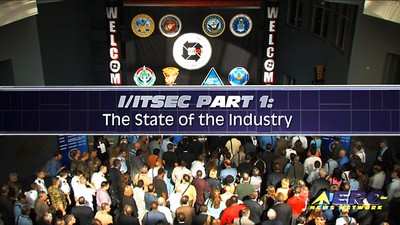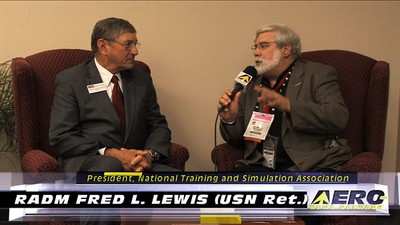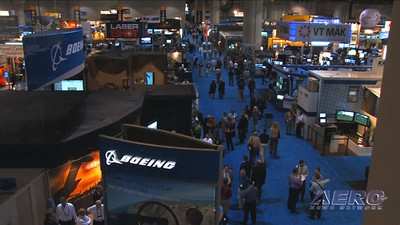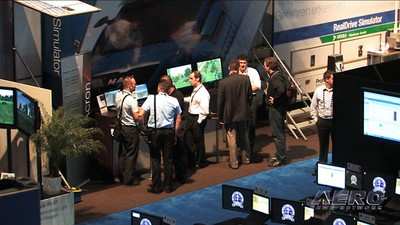Thu, Jan 13, 2011
One of the most truly fascinating events we cover each year is
the annual I/ITSEC event in central Florida. Known more formally as
the Interservice/Industry Training, Simulation and Education
Conference, 'I/ITSEC' promotes cooperation among the Armed
Services, Industry, Academia and various Government agencies in
pursuit of improved training and education programs, identification
of common training issues and development of multiservice
programs.

Initiated in 1966 as the Naval Training Device Center/Industry
Conference, the conference has evolved and expanded through
increased participation by the Army, Air Force, Marine Corps, Coast
Guard, and Industry. In 1979 it became known as the
Interservice/Industry Training Equipment Conference. The Services
have steadily evolved toward a total systems philosophy in the
acquisition of training equipment and training delivery systems. In
1986 the Conference name was further refined to the
Interservice/Industry Training Systems Conference (I/ITSC) to
recognize the increased importance of Manpower, Personnel, and
Training aspects in the systems acquisition process.

In 1992 the name was further changed to the
Interservice/Industry Training Systems and Education Conference
(I/ITSEC) to reflect the consolidation of the Manpower and Training
Committee (MTC) and the Technology and Innovations in Training and
Education (TITE) Conference with I/ITSEC. This change emphasizes
the importance of education and the man-machine interface in
meeting force-training requirements through simulation training. In
1997, to reflect continued growth and changes in the industry, the
conference name was refined to the Interservice/Industry Training,
Simulation and Education Conference (I/ITSEC).

ANN was fortunate enough to score an intriguing and insightful
interview with the President of the National Training and
Simulation Association, RADM Fred Lewis (USN-Ret) about the
military simulation industry and the critical issues that may
determine its future. Admiral Lewis is a man who understands the
value of simulation based on years of hard experience in the real
world. Lewis graduated from the U.S. Naval Academy in 1962 and was
designated a naval aviator in November 1963.

After an initial tour of duty as a flight instructor, he trained
in the F-4 Phantom and participated in numerous operational
deployments to the Atlantic and Pacific and twice deployed to the
Gulf of Tonkin for combat operations over North Vietnam.
Subsequently, he attended the U.S. Naval Test Pilot School and led
the stand-up of the Atlantic Fleet’s F-14 FRS. During a 33
year career, he accumulated over 6,500 accident-free flying hours
in tactical aircraft and over 1,200 carrier arrested landings.
More News
Aero Linx: International Federation of Airworthiness (IFA) We aim to be the most internationally respected independent authority on the subject of Airworthiness. IFA uniquely combi>[...]
Ultrahigh Frequency (UHF) The frequency band between 300 and 3,000 MHz. The bank of radio frequencies used for military air/ground voice communications. In some instances this may >[...]
A Few Questions AND Answers To Help You Get MORE Out of ANN! 1) I forgot my password. How do I find it? 1) Easy... click here and give us your e-mail address--we'll send it to you >[...]
From 2019 (YouTube Edition): Learning To Paint Without Getting Any On Your Hands PPG's Aerospace Coatings Academy is a tool designed to teach everything one needs to know about all>[...]
Also: Sustainable Aircraft Test Put Aside, More Falcon 9 Ops, Wyoming ANG Rescue, Oreo Cookie Into Orbit Joby Aviation has reason to celebrate, recently completing its first full t>[...]
 ANN's Daily Aero-Linx (05.06.25)
ANN's Daily Aero-Linx (05.06.25) ANN's Daily Aero-Term (05.06.25): Ultrahigh Frequency (UHF)
ANN's Daily Aero-Term (05.06.25): Ultrahigh Frequency (UHF) ANN FAQ: Q&A 101
ANN FAQ: Q&A 101 Classic Aero-TV: Virtual Reality Painting--PPG Leverages Technology for Training
Classic Aero-TV: Virtual Reality Painting--PPG Leverages Technology for Training Airborne 05.02.25: Joby Crewed Milestone, Diamond Club, Canadian Pilot Insurance
Airborne 05.02.25: Joby Crewed Milestone, Diamond Club, Canadian Pilot Insurance






